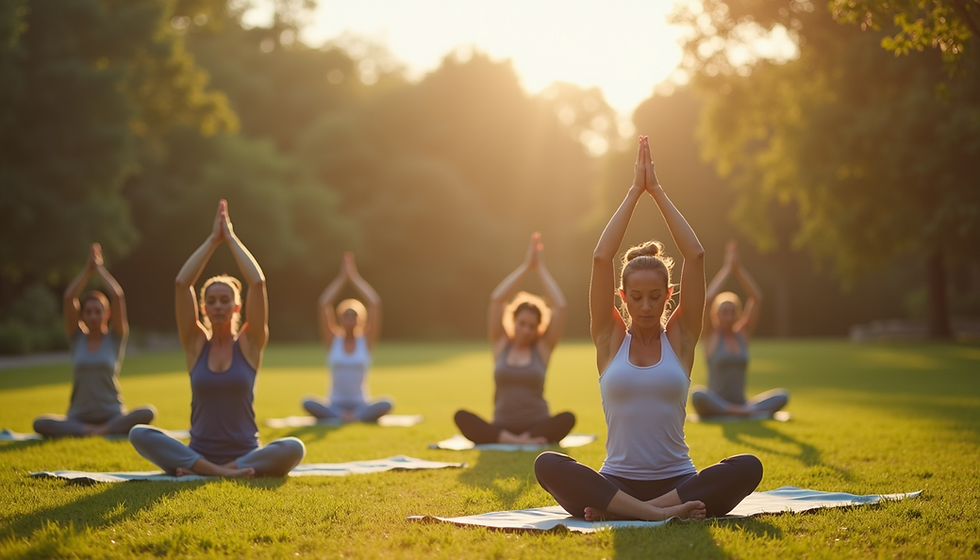The Importance of Flexibility Development from Childhood to Senior Years
- Summarised by TGHC Editorial Team
- 3 days ago
- 3 min read
Flexibility is a key component of physical health that often gets overlooked. It affects how well we move, how we perform daily tasks, and how we recover from injuries. Developing and maintaining flexibility throughout life can improve quality of life and reduce the risk of musculoskeletal problems. This post explores how flexibility changes from childhood to senior years, why it matters, and practical ways to support it at every stage.

Flexibility in Childhood and Adolescence
Children naturally have high flexibility due to the elasticity of their muscles and connective tissues. This flexibility supports their rapid growth and active lifestyles. Research shows that flexibility in childhood is linked to better motor skills and physical performance (Smith et al., 2015). Encouraging activities like gymnastics, dance, and swimming can help children develop a strong foundation of flexibility.
However, as children grow, flexibility can decline if not actively maintained. Sedentary habits and increased screen time may reduce movement variety, leading to stiffness. Parents and educators should promote regular stretching and dynamic movement to preserve flexibility during these formative years.
Flexibility in Adulthood
Adults often experience a gradual loss of flexibility due to aging, reduced physical activity, and muscle tightness. This decline can affect posture, balance, and increase injury risk. Studies indicate that adults who engage in regular stretching or yoga maintain better joint range of motion and muscle elasticity (Johnson & Lee, 2018).
Incorporating flexibility exercises into daily routines can improve work performance and reduce discomfort from prolonged sitting or repetitive tasks. Simple practices such as morning stretches, yoga sessions, or targeted mobility exercises can make a significant difference.
Flexibility in Senior Years
Flexibility becomes even more critical in senior years. Loss of flexibility contributes to falls, joint pain, and decreased independence. Research highlights that seniors who maintain flexibility through gentle stretching and balance exercises experience better mobility and fewer injuries (Garcia et al., 2020).
Programs designed for older adults often focus on slow, controlled movements that improve flexibility without strain. Activities like tai chi, chair yoga, and water aerobics are excellent options. Maintaining flexibility supports seniors in performing daily activities such as bending, reaching, and walking safely.
Practical Tips to Support Flexibility Across Life
Start early: Encourage children to engage in varied physical activities that promote stretching and movement.
Stay consistent: Adults should integrate flexibility exercises into their weekly routine, aiming for at least 2-3 sessions.
Choose appropriate activities: Tailor exercises to age and ability, focusing on safe, controlled movements.
Listen to your body: Avoid overstretching or pushing through pain, especially in older adults.
Combine with strength and balance training: Flexibility works best alongside other fitness components to support overall function.
Flexibility is not just about touching your toes; it’s about maintaining the freedom to move comfortably and safely throughout life. By understanding how flexibility changes and taking steps to nurture it, people of all ages can enjoy better health and mobility.
References
Garcia, M., Thompson, L., & Nguyen, P. (2020). Effects of flexibility training on mobility and fall risk in older adults: A systematic review. Journal of Aging and Physical Activity, 28(3), 345-356. https://doi.org/10.1123/japa.2019-0154
Johnson, R., & Lee, S. (2018). The impact of yoga on flexibility and muscle strength in adults: A randomized controlled trial. International Journal of Sports Science, 6(2), 45-52. https://doi.org/10.5923/j.sports.20180602.01
Smith, A., Brown, K., & Wilson, J. (2015). Flexibility and motor skill development in children: A longitudinal study. Pediatric Exercise Science, 27(4), 456-464. https://doi.org/10.1123/pes.2014-0157



